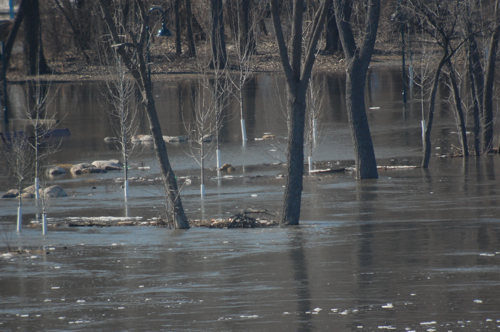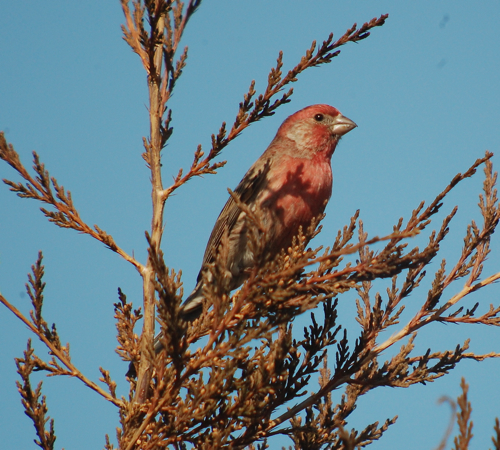
This is the week to check out the great blue heron rookery at North Mississippi Regional Park (or the one at Coon Rapids Dam too). I headed out to the North Mississippi rookery yesterday to take a look, right now the nests are very visible--even without binoculars.

You can get a great view of all sorts of behavior including nest building as the herons are coming in from migration. Some have been at this rookery for a few weeks already.

Quite a few of the herons were perched on or near a nest and not moving. I read on Cornell's Birds of North America Online that like many migratory bird species, males arrive to the nesting grounds first and establish who is taking what nest. From there, when not foraging for food, a male will spend all his time at the nest. Perhaps these were males waiting for a female to court or hoping to prevent other males from stealing sticks for their nests.

A few herons were already incubating eggs. These nests will either be way ahead of the game with chick rearing or have to start over in a few weeks. We are heading out of an unusual March--no snow in the Twin Cities at all. This is highly irregular, March is technically our snowiest month. It's not out of the realm of possibility for us to get snow in April. I'm loving the opportunity to bike on the trails a whole month early, but I'm not going to hold my breath and say that we are totally free of snow for the rest of the spring. If we get a cold snap, these already incubating herons may risk losing young and have to start over. But that's what birds do.

So, take a moment to head to one of our heron rookeries before the leaves are out. You can always somewhat see the nests at North Mississippi Regional Park and Coon Rapids Dam but it's ten times easier to point them to kids before the leaves are out. If this 70 degree weather keeps up, that could be rather soon...aw man, that means that leaves will be well out when warblers get here in May. That's going to make warbler watching a challenge.
UPDATE 2011: This heron rookery was destroyed by a tornado that ripped through Minneapolis in May, 2011. All the nests were destroyed. The birds did renest, some up river at Coon Rapids Dam and others at a new site at the Riverside Power Plant near the Head of Navigation on the Mississippi River. Most of the young did not survive, but the few that were rescued were eventually released later in the summer.

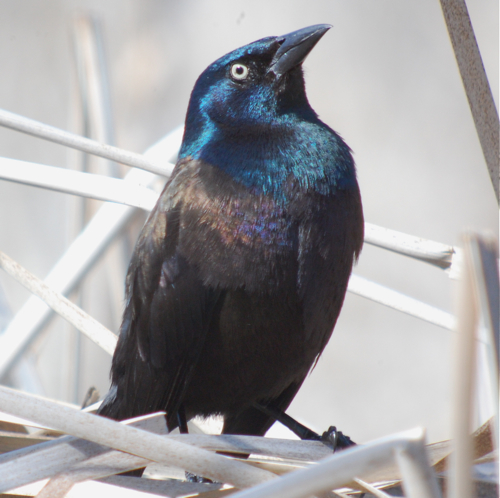 It's that special time of year when migration is in the early stages and any sign of spring is a welcome sign--even the first few small flocks of common grackles like the one above. They really are a pretty bird in the right light. But soon, grackles will be driving people who feed birds a little crazy. They big dark birds fly in with their ravenous appetites and large flock numbers during migration and need the extra fuel to make it to their breeding grounds. Those who have enjoyed chickadees, cardinals and titmice all winter will find the feeders crowded with these aggressive blackbirds. Once insects are out in full force, grackles will go for those, but in the meantime they can be a bit irritating as they crowd out some of the smaller birds. When I worked at the bird feed store, grackles were welcome because that always meant a bump in seed sales because the grackles eat so much.
It's that special time of year when migration is in the early stages and any sign of spring is a welcome sign--even the first few small flocks of common grackles like the one above. They really are a pretty bird in the right light. But soon, grackles will be driving people who feed birds a little crazy. They big dark birds fly in with their ravenous appetites and large flock numbers during migration and need the extra fuel to make it to their breeding grounds. Those who have enjoyed chickadees, cardinals and titmice all winter will find the feeders crowded with these aggressive blackbirds. Once insects are out in full force, grackles will go for those, but in the meantime they can be a bit irritating as they crowd out some of the smaller birds. When I worked at the bird feed store, grackles were welcome because that always meant a bump in seed sales because the grackles eat so much.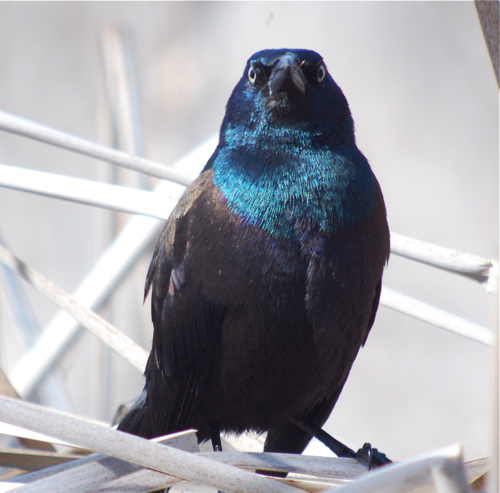
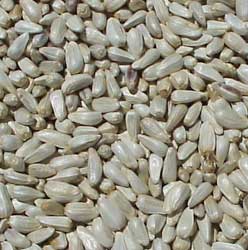
 Friday, I had a meeting in Eden Prairie, MN--the southwest side of the metro Twin Cities. As I traveling on the highway, I noticed a large group of gulls loafing on a pond off the highway. I made a mental note of the exit and decided to stop there on my way back home after the meeting. When I pulled down the street, I noticed the ponds were almost completely ice free and could have some bird potential.
Friday, I had a meeting in Eden Prairie, MN--the southwest side of the metro Twin Cities. As I traveling on the highway, I noticed a large group of gulls loafing on a pond off the highway. I made a mental note of the exit and decided to stop there on my way back home after the meeting. When I pulled down the street, I noticed the ponds were almost completely ice free and could have some bird potential.






 There's a very cool
There's a very cool 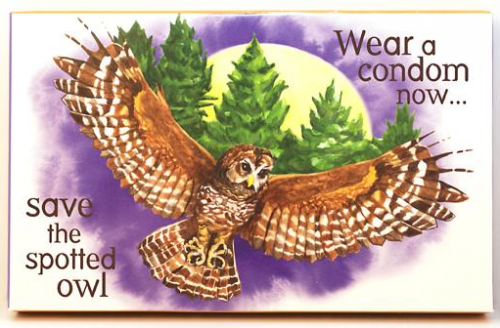
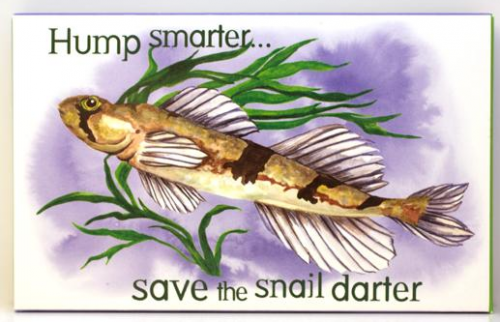




 It's an oddly exciting day at the National Park I work for (
It's an oddly exciting day at the National Park I work for ( St. Paul has closed Sheperd Rd. from behind the museum all the way to Hwy 61 in preparation for the flood. One of the officers I spoke with said parts were already under water. I spent a majority of Sunday afternoon roving and interpreting the flooding--what ranger wouldn't rather be outdoors on a sunny day? The river is in flood stage at 14 feet and when I was at the river it was at 16.4 feet. It's expected to crest on Wednesday at 19.5 feet!
St. Paul has closed Sheperd Rd. from behind the museum all the way to Hwy 61 in preparation for the flood. One of the officers I spoke with said parts were already under water. I spent a majority of Sunday afternoon roving and interpreting the flooding--what ranger wouldn't rather be outdoors on a sunny day? The river is in flood stage at 14 feet and when I was at the river it was at 16.4 feet. It's expected to crest on Wednesday at 19.5 feet!